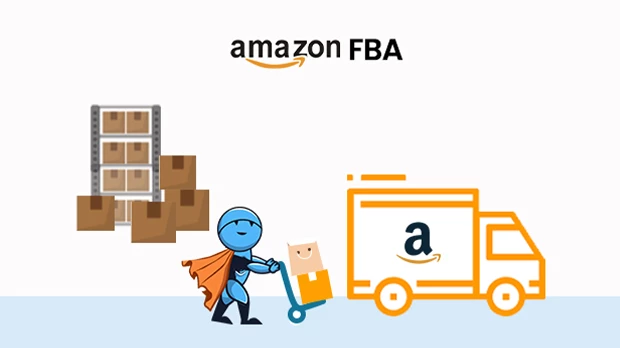Ship Inventory to Amazon: Essential Guide

Introduction
Shipping inventory to Amazon’s fulfillment centers is a crucial aspect of successfully selling products on the platform. In this comprehensive guide, we will delve into the intricacies of ship inventory to Amazon, providing you with valuable insights, tips, and strategies to ensure a seamless and efficient shipping process.
Understanding Ship Inventory to Amazon
When you decide to utilize Amazon’s fulfillment services, you are essentially outsourcing the storage, packaging, and shipping of your products. Amazon’s vast network of fulfillment centers enables you to reach customers quickly and efficiently. By sending your inventory to Amazon, you gain access to Prime eligibility, faster shipping options, and a wider customer base.
The Role of Amazon Fulfillment Centers
Amazon’s fulfillment centers are strategically located warehouses equipped to store and ship products to customers. These centers handle tasks such as picking, packing, shipping, and even customer service. Leveraging Amazon’s expertise in logistics allows you to focus on other aspects of your business while leaving the shipping process in capable hands.
Fulfillment by Amazon (FBA) vs. Merchant Fulfilled Network (MFN)
Fulfillment by Amazon (FBA)
FBA is a program where you send your products to Amazon’s fulfillment centers, and they handle all aspects of order fulfillment. This includes picking, packing, shipping, and customer service. Your products become eligible for Prime and Amazon’s customer service.
Merchant Fulfilled Network (MFN)
With MFN, you handle the entire fulfillment process yourself. This means you are responsible for packing and shipping orders directly to customers. While you have more control, you don’t benefit from the Prime eligibility and the logistical support that FBA offers.
Benefits of Using Amazon’s Ship Inventory Service
Using Amazon’s ship inventory service offers several compelling benefits:
1. Prime Eligibility
When your products are fulfilled by Amazon, they become eligible for Amazon Prime’s fast and free shipping, making them more appealing to Prime members and potentially boosting sales.
2. Access to Amazon’s Customer Base
Amazon boasts a massive customer base, and utilizing their fulfillment services allows your products to be exposed to a broader audience, increasing your chances of making sales.
3. Efficient Order Fulfillment
Amazon’s advanced logistics ensure that orders are picked, packed, and shipped promptly, resulting in satisfied customers and positive reviews.
4. Focus on Business Growth
Outsourcing fulfillment tasks to Amazon allows you to concentrate on business growth strategies, product development, and marketing efforts.
5. Reduced Shipping Costs
Amazon’s extensive shipping network often leads to reduced shipping costs, which can be particularly beneficial for businesses aiming to offer competitive prices.
How to Prepare Your Inventory for Shipping to Amazon
Before sending your products to Amazon’s fulfillment centers, it’s essential to follow these steps to ensure a smooth process:
1. Conduct a Quality Check
Inspect your products thoroughly to ensure they meet Amazon’s quality standards. Any damaged or defective items should be addressed before shipment.
2. Barcode Your Products
Each unit you send to Amazon must have a scannable barcode that corresponds to the product’s listing on the platform. This barcode helps Amazon track and manage your inventory accurately.
3. Create a Shipment Plan
In your Amazon Seller Central account, create a shipment plan detailing the products you intend to send, their quantities, and the fulfillment center you’ll be shipping to.
4. Package Your Products
Follow Amazon’s packaging guidelines to ensure your products are adequately protected during transit and storage. Use appropriate packaging materials to prevent damage.
5. Print Labels
Amazon requires labels for each unit and box in your shipment. These labels provide essential information and help Amazon associates identify and process your products efficiently.
6. Prepare Shipping Documents
Complete any necessary shipping documents and labels required by the carrier you’re using to transport your products to Amazon’s fulfillment center.
Packaging Guidelines for Amazon Shipments
Proper packaging is crucial to ensure your products arrive at Amazon’s fulfillment centers in good condition. Follow these packaging guidelines:
1. Use Sturdy Packaging Materials
Choose packaging materials that provide adequate protection during transit and storage. This includes boxes, bubble wrap, packing paper, and more.
2. Avoid Excess Empty Space
Minimize empty space within your boxes to prevent products from shifting during transit. This helps reduce the risk of damage.
3. Secure Fragile Items
For fragile items, use extra padding and cushioning materials to prevent breakage. Clearly label boxes containing delicate products as “Fragile.”
4. Seal Boxes Properly
Use high-quality tape to seal your boxes securely. Reinforce seams and edges to prevent the box from opening during transit.
5. Label Boxes Clearly
Place labels with relevant information, including your seller ID, shipment ID, and box contents, on the outside of each box.
Labeling Requirements and Guidelines
Accurate labeling ensures that Amazon’s associates can process your inventory efficiently. Follow these labeling requirements and guidelines:
1. Apply Labels Correctly
Place labels on the flat surfaces of products and packaging, avoiding seams, curves, or corners. This ensures that the labels are scannable and legible.
2. Use Standardized Barcodes
Use standard UPC, EAN, ISBN, or ASIN barcodes for your products. These barcodes help Amazon match your products with their listings.
3. Label Individual Units
Each unit you send to Amazon should have a scannable barcode label. This allows for precise tracking and inventory management.
4. Label Boxes
If your shipment contains multiple units of the same product, label the outside of the box with a suffocation warning and the quantity of items inside.
Shipping Documentation and Procedures
Navigating the shipping process requires proper documentation and adherence to procedures. Follow these steps to ensure a successful shipment:
1. Choose a Carrier
Select a reliable carrier to transport your products to Amazon’s fulfillment center. Consider factors like shipping speed and cost.
2. Generate Shipping Labels
Create shipping labels as required by your chosen carrier. These labels should include essential information such as sender and recipient details, tracking numbers, and barcodes.
3. Arrange Pickup
Schedule a pickup with your chosen carrier or drop off your shipment at a designated location. Ensure your packages are labeled and properly sealed.
4. Track Your Shipment
Use the provided tracking number to monitor the progress of your shipment. This helps you stay informed about its estimated delivery date.
5. Confirm Receipt
Once your shipment arrives at Amazon’s fulfillment center, you will receive confirmation through your seller account. This marks the beginning of the processing and inventory management phase.
Choosing the Right Shipping Method
Selecting the appropriate shipping method for your inventory is a crucial decision. Consider the following options:
1. Standard Shipping
Standard shipping offers reliable delivery times at a moderate cost. It’s a suitable choice for products that don’t require expedited delivery.
2. Expedited Shipping
Expedited shipping ensures faster delivery times, making it ideal for customers who need their products quickly. This option may come with higher shipping fees.
3. Priority Shipping
Priority shipping guarantees the fastest delivery times and is well-suited for time-sensitive products. It often comes at a premium price.
4. Freight Shipping
For larger shipments or products with substantial weight, freight shipping is a viable option. Freight carriers specialize in handling bulky or heavy items.
Managing Inventory in Amazon Fulfillment Centers
Once your inventory arrives at Amazon’s fulfillment center, effective inventory management is key to a successful partnership. Follow these best practices:
1. Regular Inventory Monitoring
Frequently check your inventory levels to ensure they match your records. Use Amazon’s tools to track your stock levels and sales velocity.
2. Replenish Stock in Time
Monitor sales trends and reorder products before they run out of stock. This prevents interruptions in fulfilling customer orders.
3. Remove Unsellable Inventory
Regularly review your inventory for unsellable or damaged items. Amazon provides options for disposing of or returning such products.
4. Utilize Amazon’s Tools
Amazon offers various tools and reports to help you manage your inventory effectively. These include the Inventory Health Report and the Virtual Shelf tool.
Inventory Reconciliation and Reporting
Accurate inventory reconciliation and reporting are vital for maintaining a smooth operation. Follow these steps to ensure accuracy:
1. Regularly Reconcile Inventory
Compare your physical inventory with the quantities listed in your Amazon Seller Central account. Address any discrepancies promptly.
2. Review Inventory Performance Metrics
Monitor key performance metrics such as sell-through rate, excess inventory percentage, and stranded inventory to make informed decisions.
3. Generate Inventory Reports
Use Amazon’s reporting tools to generate detailed inventory reports. These reports offer insights into your inventory turnover, sales, and more.
Common Challenges in Shipping Inventory to Amazon
While shipping inventory to Amazon offers numerous benefits, there are potential challenges to be aware of:
1. Packaging Compliance
Failure to adhere to Amazon’s packaging guidelines can lead to damaged products and additional fees.
2. Labeling Errors
Incorrect or unreadable labels can result in delays and confusion during the receiving process.
3. Inventory Mismanagement
Inaccurate inventory records can lead to stockouts, overselling, or stranded inventory.
4. Unexpected Fees
Fulfillment fees, storage fees, and other charges can impact your profitability if not properly managed.
Best Practices for a Smooth Inventory Shipping Experience
To ensure a smooth and successful inventory shipping experience, follow these best practices:
1. Familiarize Yourself with Amazon’s Policies
Stay updated on Amazon’s policies and guidelines regarding shipping, labeling, and inventory management.
2. Plan Ahead
Create a detailed shipment plan well in advance to avoid last-minute rushes and ensure accurate preparation.
3. Utilize Amazon’s Resources
Leverage Amazon’s educational resources, seller forums, and customer support to address any questions or concerns.
4. Monitor and Adapt
Regularly review your shipping and inventory management processes and make necessary adjustments based on performance data.
FAQs
Q1: Can I use my own shipping carrier for FBA shipments?
Yes, you can choose your preferred carrier to transport your inventory to Amazon’s fulfillment centers.
Q2: How are shipping fees calculated for FBA?
Shipping fees for FBA are determined based on factors such as package weight, dimensions, and shipping distance.
Q3: Can I track my shipments to Amazon’s fulfillment centers?
Yes, most carriers provide tracking numbers that allow you to monitor the progress of your shipments.
Q4: What happens if my products are damaged during transit to Amazon?
If your products are damaged during transit, you may be eligible for reimbursement or replacement, depending on the circumstances.
Q5: How often should I reconcile my inventory with Amazon’s records?
Regular inventory reconciliation is recommended at least on a monthly basis to ensure accuracy.
Q6: Can I remove inventory from Amazon’s fulfillment centers?
Yes, you can request the removal of inventory, but it may incur fees depending on the reason for removal.
Q7: What is the “stranded inventory” in Amazon’s terms?
Stranded inventory refers to products that are not available for purchase due to listing issues or other reasons.
Q8: Can I switch between FBA and MFN for different products?
Yes, you can choose to fulfill some products through FBA and others through MFN based on your preferences.
Q9: Are there any restrictions on the types of products I can ship to Amazon?
Yes, Amazon has specific restrictions on hazardous materials and other prohibited items.
Q10: How long does it take for my inventory to become available for sale after shipment?
After your inventory reaches Amazon’s fulfillment center, it usually takes a few days for the products to become available for purchase on the platform.
Conclusion
Shipping inventory to Amazon is a pivotal step in optimizing your online business. By understanding the nuances of this process, adhering to guidelines, and leveraging Amazon’s resources, you can streamline your shipping operations, improve customer satisfaction, and enhance your overall selling experience. Embrace the benefits of Amazon’s fulfillment services and watch your business thrive in the competitive e-commerce landscape.



